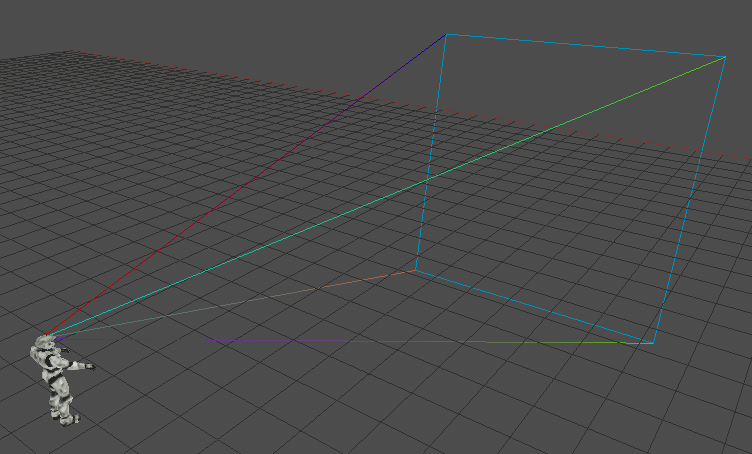I was just recently adding the ability for my in-game entities to have their own Frustums, with the intentions of making them able to see enemies later down the road of my development cycle. My custom approach works great, but I find myself left with a suprisingly staggering question. What kind of perspective should my entities have? What is the standard for modern games? Here is a picture to show my implementation in action:
The Settings for that Frustum are as follows:
// Just winging a random projection; worked pretty well, actually!
Matrix4 entityProjectionMatrix = Matrix4.CreatePerspectiveFieldOfView(0.5f,1f, 0.1f, 50f);
// Calculated by hand for testing purposes
Matrix4 entityViewMatrix = new Matrix4(
-0.02840426f, -0.1789574f, 0.9834467f, 0,
0, 0.9838437f, 0.1790296f, 0,
-0.9995965f, 0.005085204f, -0.02794535f, 0,
50.50341f, 6.017713f, -46.88488f, 1);
BoundingFrustum entityFrustum = new BoundingFrustum(entityViewMatrix * entityProjectionMatrix);
Now, clearly, those settings are a little lacking in the side-view peripheral department. I also don't think the entities should have a large frustum like players, who can see damn near anything(the player Frustum is absolutely massive). I feel as though something small, yet realistic would suffice, but I don't know if there is already a current standard for how much an entity should be able to see. I'm sorry if this question is broad, but it is a problem, and I am looking for some clarity/literature on the topic.



